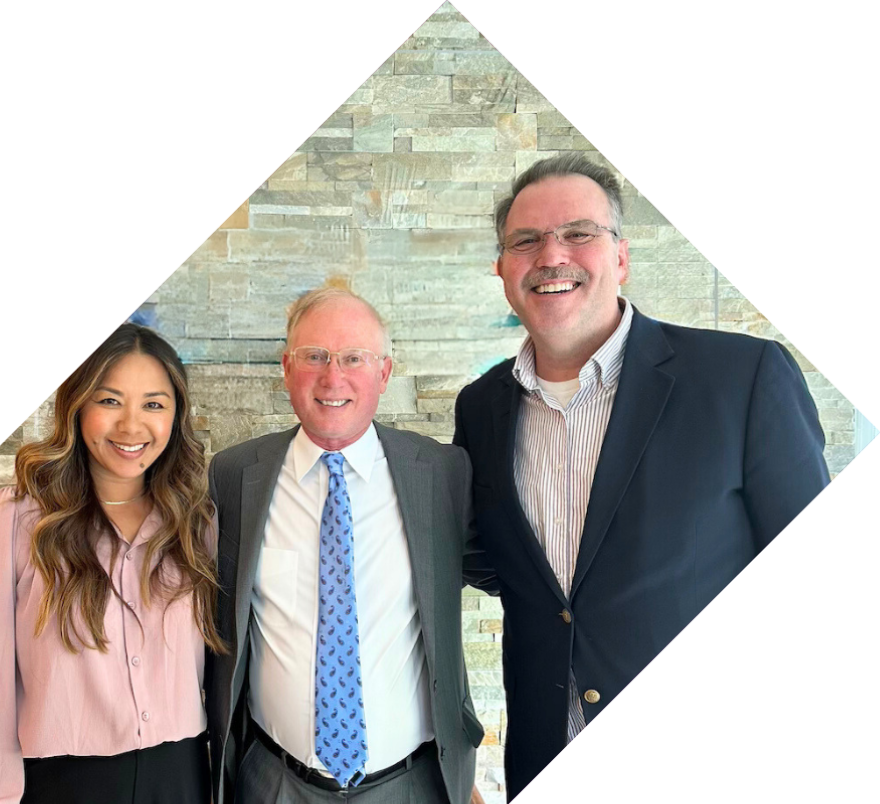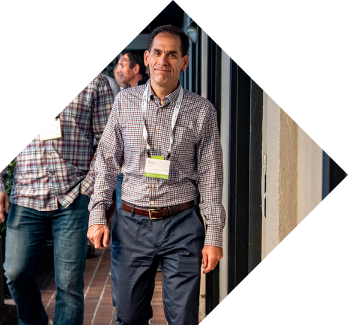By Verne Marble, Director of Business Development
Two years ago, Private Advisor Group crafted a vision to develop an investment management platform for our advisors. One year ago, we brought that vision to fruition with the launch of WealthSuite, an exclusive platform for hybrid and IAR-only advisors affiliated with Private Advisor Group. In the months leading up to the October 2022 launch, I chronicled our decision and journey to build an in-house investment management platform. Now, a year later, we are through the fog and can reflect clearly on the successes and lessons learned a year after launching WealthSuite.
What We Built
We built WealthSuite to be an end-to-end experience encompassing account profiling, account opening, model assignment, and account maintenance. The sophisticated, but simple, investment management framework leverages custom models delivered by recognized investment managers, supports multiple custodial options, and is cost-effective and competitively priced.
Why We Built It
Private Advisor Group sought to deliver added value to our affiliated advisors with an investment management platform that:
- Mitigates confusion and offers greater flexibility than other platforms in the marketplace;
- Reduces platform fees for advisors and investors;
- Unlocks increased capacity, empowering advisors to scale their businesses;
- Enables more efficient and compliant operations;
- Empowers advisors to service their clients’ unique segments, account sizes, and demographics;
- Protects advisors with process standardization to yield better succession planning outcomes; and
- Elevates the station of Private Advisor Group as a destination for advisors looking to grow.
What We Learned
Now, on the one-year anniversary of launching WealthSuite, we can take stock of some of the lessons learned from building, launching, and delivering an investment management platform as an RIA.
Lesson #1: Understand the limitations of technology and trading providers and how they interact with other components of the ecosystem.
We focused a lot of energy on selecting the right technology and trading partner. While we believe, in retrospect, that we selected the right technology firm, it wasn’t without some bumps in the road.
- Select a provider you trust. Our chosen platform technology provider was already a longstanding partner with the firm, had a flexible and responsive team to trade our models, and offered an intuitive advisor portal that integrates into our core technology stack.
- Investigate areas of the platform that may require custom development. While account opening features were in place, we worked with the provider to develop custom workflows to give advisors increased optionality in the account opening experience.
- Consider the interplay of elements in the technology ecosystem. With multi-custodial support being a vital requirement for the platform, we uncovered some challenges in custodial policies surrounding third parties conducting trades on behalf of advisors. We hired a dedicated portfolio administrator to conduct trading for these situations, while still leveraging the trading technology from our provider. The bonus here was finding that having a dedicated portfolio administrator brings a lot of value and unanticipated flexibility. (Spoiler alert for lesson #5.)
Lesson #2: Education leads to adoption, and it takes lots of repetition.
We knew that driving adoption of a new platform would be challenging. Getting advisors to change behavior and disrupting the status quo is always a tough sell. Even knowing this, our adoption forecasting was ambitious.
- Assess advisor appetite. While we knew that many advisors had long-held beliefs about models and that others were already leveraging existing platforms, we anticipated the economics, flexibility, and tailored curation of WealthSuite would be a strong attractant. It turns out many advisors opted for a wait-and-see approach. This is consistent with the fact that 75% of our advisors identify as normal or late adopters of new technology.
- Many factors impact launch timing. Launching an investment management platform like WealthSuite requires substantial compliance and legal review, in addition to revising and refiling our Form ADV. These hard factors interacted with some other considerations (e.g., launching around one of our in-person advisor events) to result in an October launch. For future launches, we may avoid this timeframe as being too close to the holiday season and end-of-year planning, and instead opt for a first-quarter launch of new platforms.
- If you build it, they will come…with education. In this space, where advisors and their staff are overwhelmed, where there are many preconceived notions, and where switching platforms and providers is disruptive to business, it isn’t enough to just build something and expect that advisors will adopt it. We realized the importance of educating our advisors on platform ease-of-use, the benefits of outsourced investment management, and the differentiators of the platform in motivating advisors to consider adoption.
- Launch. And launch again. With our Marketing team as partners, we “re-launched” the platform in early 2023, supported by a dedicated multi-channel marketing campaign for the first half of the year. This campaign was designed to help advisors overcome real or perceived objections, and included monthly thematic emails, social media posts, webinars with our model strategists, how-to videos, and dedicated resources and content at our Annual Conference.
Lesson #3: When it comes to pricing, benchmark against the competition but don’t be afraid to innovate.
Our approach to platform pricing is impacted by a number of factors: while we need to make money to sustain the business, we also need to ensure pricing is reasonable, competitive, and doesn’t create a barrier to entry, adoption, or affiliation. Feedback from advisors indicates that we got the pricing right for WealthSuite.
- Cost must be competitive. With WealthSuite, we had strong knowledge of the pricing levels and pricing methodologies of competing platforms, so we knew what our benchmarks were and could price the platform accordingly.
- Work with what you’ve got. Given our size and scale, we don’t have a huge sales and distribution infrastructure to support. While this could be considered a downside, it’s also what enabled us to develop a platform pricing model that is anywhere from 25% to 50% lower than competing platforms.
- Challenge the status quo. We opted not to use an account-level pricing model that is common in the marketplace. Instead, we priced the platform based on the cumulative AUM an advisor has on the platform. As an advisor grows their AUM on WealthSuite, they qualify for reduced pricing tiers for new accounts as well as existing accounts. This also allows advisors to support smaller accounts at lower fees than would be available otherwise, which opens the door for advisors to better service children of existing clients and next-generation investors.
Lesson #4: Strategist Selections
The WealthSuite platform is designed as an outsourced platform, leveraging models delivered by recognized investment managers. Our primary objective was to deliver a sophisticated, but simple, investment management framework out of the gate.
- Curation helps differentiate. Advisors can get overwhelmed by the vast marketplaces of other platforms, so we worked hard with select strategists to make navigating choices easier. WealthSuite models are differentiated from off-the-shelf models that these managers provide to other RIAs and platforms. We accomplished this by curating custom ETF and mutual fund/ETF models that incorporate an open architecture approach to portfolio construction.
- Customization was critical. We partnered with a direct indexing/custom indexing provider to help our advisors access solutions suitable for clients with tax management needs or a desire to have their portfolios managed according to their personal preferences.
- Find partners that fit with existing infrastructure. We identified our partner strategists based on the unique elements they brought to the table, but learned that not all investment managers were compatible with all of our custodians. This resulted in an experience where some strategies are only available for accounts custodied at particular custodians. Going forward, our requirement when considering new strategists is their compatibility with all custodial options supported by the platform.
Lesson #5: Flexibility is the key to growth.
While a perfectly smooth rollout and explosive adoption would have been ideal, it’s not realistic. The key to keeping WealthSuite on a positive trajectory has been flexibility and adaptation in the face of unexpected headwinds.
- Listen to the users, the providers, and the servicers. We built WealthSuite from the ground up using input from our advisors (our clients), our technology and investment management partners, and key internal stakeholders. This input was absolutely vital to the launch and ongoing viability of the platform.
- It’s about solving problems. Approach development—current and future—with a problem-solving mindset. Each potential new strategist or new capability that we consider must help us to solve a problem for our advisors or we won’t consider it. To do anything different would just water down the offering and the platform.
- Unintended consequences can have positive outcomes. I mentioned earlier that we hired a portfolio administrator to assist us with the trading of our models at one of our custodians. Now that we have this level of internal expertise, we’re considering how we can add capabilities in the area of outsourced trading for advisors who prefer to build and manage their own models.
Why It All Matters Our journey from idea to delivery to maintenance of a fully functional investment management platform has been both challenging and rewarding, and we’ve learned volumes along the way. One year after launch, we’ve already added to our roster of strategists and are incubating new additions and capabilities for 2024 and beyond. We know the process will never be complete, and it shouldn’t be, because we know that we need to keep evolving to meet the needs of our advisors and their clients. If you’re a business leader considering a similar undertaking for your firm, or if you’re an advisor that’s intrigued not just by what we built, but by.




